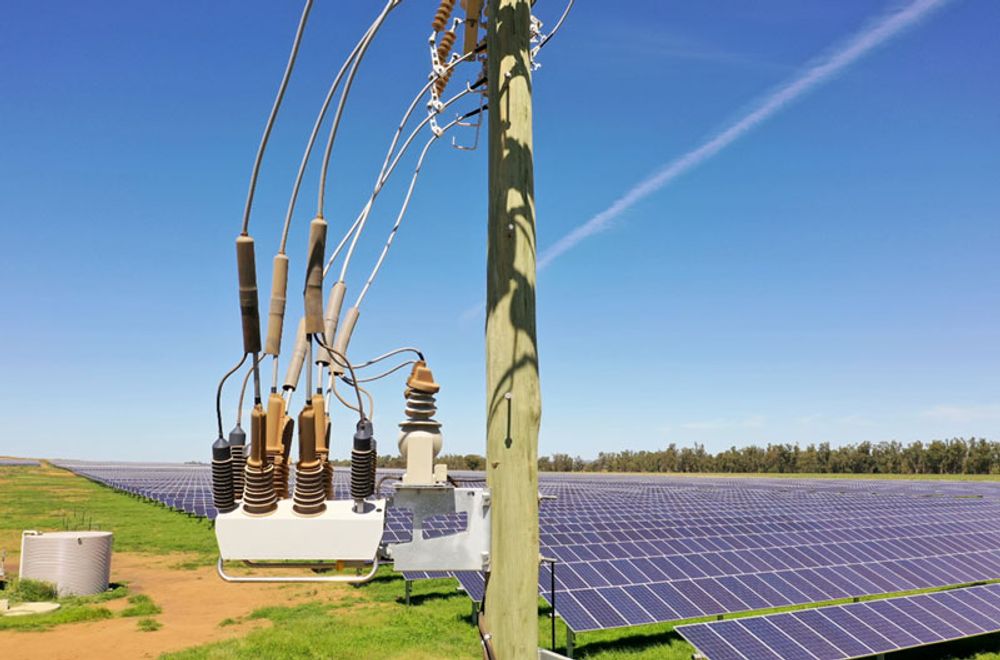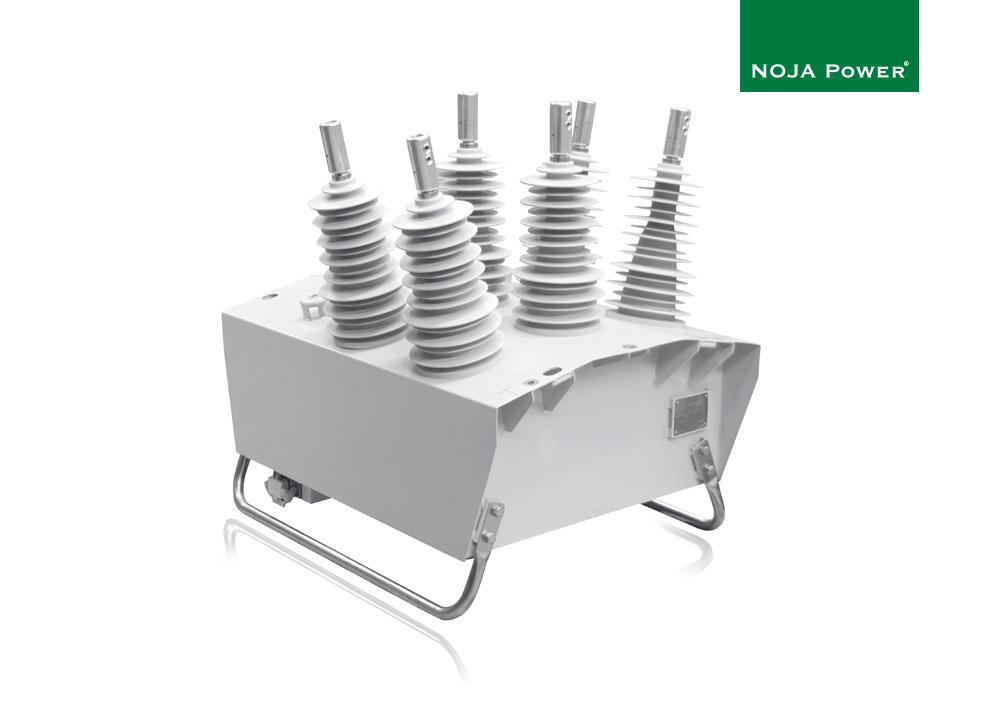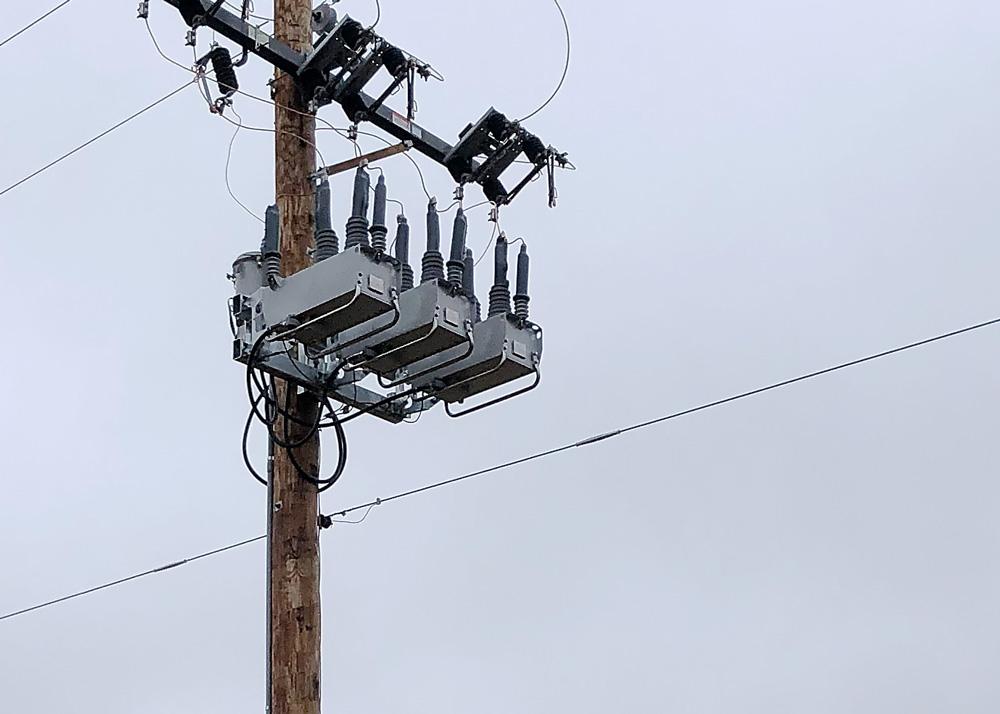Technical Article
Updated 03/2023
Recloser Fundamentals
What is a Recloser
A Recloser is a special type of electrical circuit breaker that is designed to rapidly open and close. Unlike circuit breakers, which are designed to “trip” and stay in the open state, Reclosers can rapidly transition states from closed, to open and back. These devices aim to stop network faults from causing long outages, by quickly restoring power.

True reclosers are compliant to the joint IEC and IEEE Recloser standard, C37.60/IEC62271-111. This standard has specific requirements for reclosing performance, which is not covered by the basic Circuit Breaker standard (IEC62271-100).
Reclosers exploit the statistical distribution of fault types to improve reliability. 80% of faults are temporary, such as foreign objects coming into contact with powerlines or lightning strikes. The recloser detects these faults and trips, but then rapidly recloses to restore power. 80% of the time, the reclose operation is successful and the fault is cleared, improving reliability.
What is Auto-Reclosing
Auto-Reclosing is the automatic configuration of a circuit breaker to close after opening due to a protection operation. It is used in both Medium Voltage distribution and High Voltage Transmission, although in slightly different ways. Distribution Auto-Reclosing uses standalone autoreclosers, such as the OSM Recloser product, which has an integrated control system, an HV Reclosing Circuit Breaker and a Remote SCADA RTU.
Transmission Auto-Reclosing relies on using single phase independent reclosing. This method is applied to attempt to maintain power transfer synchronicity at either ends of transmission line when a fault occurs. This is achieved using specialist transmission control relays and single-phase switchgear at a transmission substation.
Why use a Recloser
Reclosers can greatly improve the reliability of overhead distribution networks by mitigating the impact of momentary faults. With 80% of overhead distribution faults being transient, Reclosers reduce outages from these transient sources, increasing uptime of power supply. Utilities that deploy reclosers for their overhead distribution networks experience significant reliability improvements.

How to Install a Recloser
Modern reclosers are integrated systems, that include a control system and a high voltage switchgear assembly. This video demonstrates how to install a Recloser.
How to Configure a Recloser
Modern Reclosers have protection and control settings in their microprocessor based controls. In NOJA Power’s OSM Recloser, these settings can be managed using the Control and Management Software (CMS). CMS is available free to any user of a NOJA Power OSM Recloser system. A quick start video series on the CMS Software Package is available here.
What are Temporary Faults
An electrical fault is a problem with the electrical distribution system. Faults can be split into two categories based on duration, temporary and permanent. Temporary faults are problems in the electrical network which can be cleared through network operation. Permanent faults require a manual fix.
Examples of Temporary faults include branches crossing powerlines causing a short circuit or a lightning strike causing arcs to flash over insulators. For our branch scenario, the fault will clear when the branch is removed. This can be achieved by the local weather or movement of the overhead lines, or by delivering a safe volume of energy to the site through reclosing to dislodge the branch. For the lightning case, the temporary surge causes arcs over the insulation, forming a short circuit. By momentarily removing power, it allows the arc to dissipate, restoring insulation. On the reclose, the network safely reenergizes, as the arc has been cleared.
Permanent faults include physical mechanical cable failure, such as a broken conductor. These faults show different symptoms to a protection device, and intelligent devices such as NOJA Power’s OSM Recloser can detect this scenario. Reclosing does not clear permanent faults, and this broken conductor detection can prevent the reclosing of permanent faults.
Recloser Types
Legacy technologies in reclosers include oil insulated or SF6 insulated designs. These products are not environmentally friendly and require significantly more maintenance than modern solid dielectric insulated reclosers.
The most modern recloser design is a dead-tank arrangement, where solid dielectric insulation is enclosed in a metal, arc fault vented tank. This protects the solid dielectric insulation from solar radiation, giving a longer product service life and more resilience to bad weather.

Three Phase Reclosers
The most popular form of reclosers, these devices operate from 10 kV to 38 kV, and provide mechanical ganging between phase operations. In European style networks, this ganged operation protects against issues with circulating current and failure to interrupt. When operating on the European network, the first pole that clears (as each phase is 120 degrees apart and the interruption occurs at the zero crossing) causes the other phases to carry additional energy. Clearing the second pole is more challenging, as it is carrying some of the potential from the first phase, along with its own phase potential. It’s complex, but it’s handled in the IEC 62271-111 standard. If your product is type tested to IEC 62271-111, then this requirement is covered.
Single Triple Reclosers
This is an un-ganged three phase recloser, and it is designed for the North American network topology. In this network design, single phase “laterals” are used. These use a single-phase transformer to serve a load, and therefore faults can be interrupted on a per-phase basis. This practice can be dangerous on European networks (due to ferroresonance and unbalanced supply) but is valid on North American networks.

Single Phase Reclosers
As opposed to three phase units, single phase devices only have 2 terminals and one phase. Single Phase Reclosers are used on Single Wire Earth Return networks, or alternatively as a protection method for laterals in a North American style distribution grid.

Want to stay up to date with Electrical Distribution Technology?
Join our list for a free weekly technical bulletin, as we share our Global Electrical Engineering experience directly to your inbox.
Subscribe →